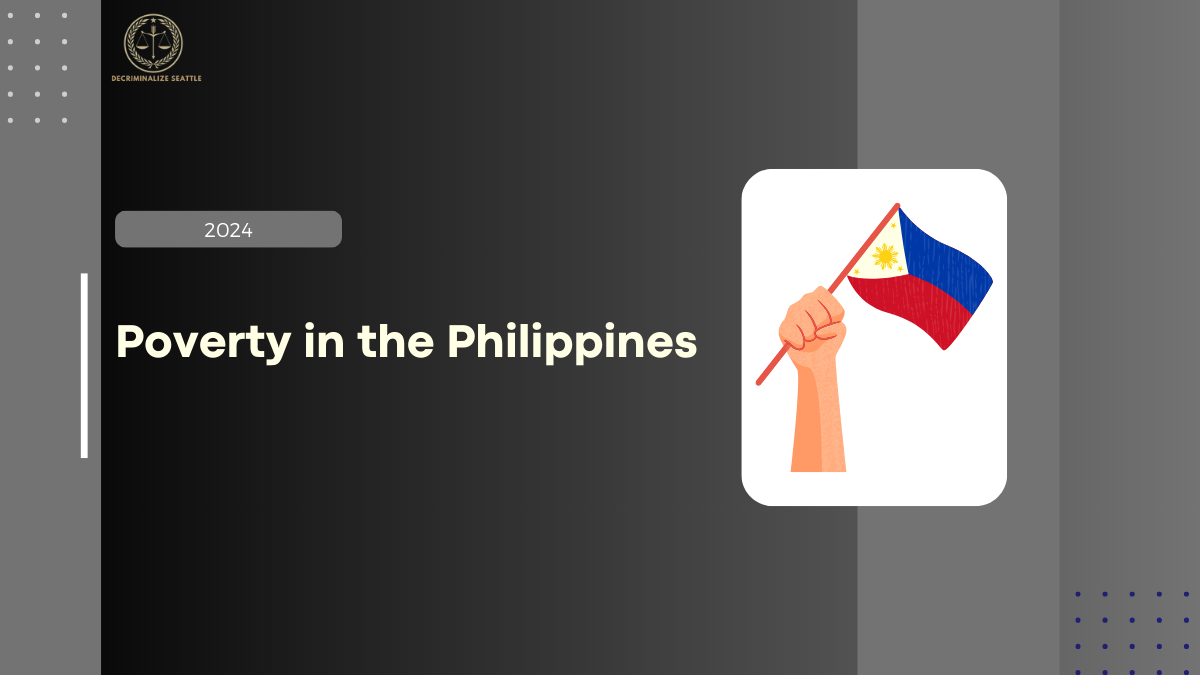In this article, we will explore poverty in the Philippines in 2024, focusing on the current statistics and economic issues that continue to challenge the nation. Poverty remains a persistent problem, though the Philippines saw a slight drop in the poverty rate to 22.4% in 2023, down from 23.7% in the first half of the year. With a population exceeding 110 million, many Filipinos are bracing for ongoing difficulties in 2024, exacerbated by extreme weather events and rising inflation rates. Read on for a closer look at the current poverty statistics and the outlook for the Philippines.

Poverty in the Philippines 2024
The Philippines’ economic growth has experienced cycles of expansion and contraction, and these fluctuations have had a profound impact on poverty levels. Poverty affects people across all income brackets, sectors, and regions, and one key driver behind this issue is the country’s growing population, which has contributed significantly to its persistence.
Several factors have played a role in increasing poverty levels in the Philippines. These include:
- Low to moderate economic growth over the past four decades, which has not been enough to significantly reduce poverty.
- A lack of robust employment generation has hindered the creation of quality jobs across various sectors.
The rising inflation rates and economic crises, combined with ongoing income and wealth distribution inequality, have further strained efforts to reduce poverty. Federal analysts predict that the Philippines will face significant economic challenges in 2024, with the country’s Gross Domestic Product (GDP) growth projected to narrow from a previous range of 6.5-8% to 6.5-7.5%.
Poverty Rate and Living Conditions
As of 2024, approximately 18.1% of the population lives below the national poverty line in the Philippines. Additionally, about 2.2% of the employed population earns less than $1.90 per day under the Purchasing Power Parity (PPP) standard. In 2021, the under-five mortality rate stood at 26 deaths per 1,000 live births.
The poverty rate remains high, but 2024 presents an opportunity for a fresh start, with many Filipinos looking to overcome the economic challenges of previous years. The Social Weather Stations (SWS) survey reported some improvements in living conditions over the past 12 months, reflecting hope for progress in tackling poverty.
Current Poverty Statistics in the Philippines in 2024
As of December 2023, the poverty rate in the Philippines was estimated at 22.4%, with a goal set by President Ferdinand R. Marcos to reduce this rate to 9% by 2028. The World Bank projects that poverty will fall from 17.8% in 2021 to 13.7% in 2023, and further to 10.7% by 2024. The official poverty measurement in the Philippines relies on pretax household income to assess its population’s welfare and living standards.
Causes of Poverty in the Philippines
Poverty in the Philippines stems from various factors, including a lack of stable income to meet basic needs like shelter, food, and clothing. Government policies, economic reforms, and conflicts have also contributed to the persistence of poverty. Despite these challenges, the Philippines has shown signs of economic recovery, with GDP growth reaching 5.9% in the third quarter of 2023 as the country continues to recover from the COVID-19 pandemic.
Government Efforts to Address Poverty
One of the main factors influencing poverty is the rising inflation rate, which has prompted the government to implement reforms to accelerate economic growth. Various targeted programs, allowances, and federal savings schemes have been introduced to assist low—and middle-income households in coping with inflation and its effects.
In January 2024, the government set a target for poverty reduction of 6.5-7.5%, acknowledging the economic headwinds caused by inflation and global economic challenges. These efforts aim to mitigate poverty’s impact on the nation’s most vulnerable populations.
Conclusion
Poverty continues to be a significant issue in the Philippines, with millions of Filipinos facing economic hardships due to rising costs and limited employment opportunities. However, the government’s ongoing efforts and economic reforms and social programs offer some hope for improvement. As we move into 2024, the country will need to address these challenges head-on to reduce poverty and improve living conditions for all its citizens.
Click here to know more.